List of all original Apple-1.
If you are a first time visitor and not familiar with iconic Apple-1 computers, please read all the information first.
Go to previous entry #69 - Go to next entry #71
Note: This is the 70th entry in the list, and not the 70th Apple-1 produced. The Apple-1 does not have a regular serial number. Only some Apple-1 have a handwritten serial number.
 Apple-1 #70 "Demo unit", 2nd batch NTI
Apple-1 #70 "Demo unit", 2nd batch NTI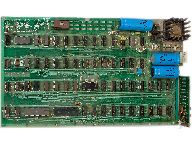 Apple-1 #70 "Demo unit", 2nd batch NTI
Apple-1 #70 "Demo unit", 2nd batch NTI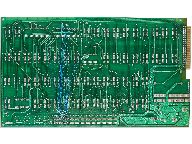 Apple-1 #70 "Demo unit", 2nd batch NTI
Apple-1 #70 "Demo unit", 2nd batch NTI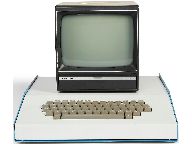 Apple-1 #70 "Demo unit", 2nd batch NTI
Apple-1 #70 "Demo unit", 2nd batch NTI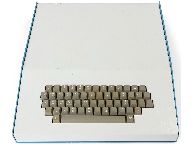 Apple-1 #70 "Demo unit", 2nd batch NTI
Apple-1 #70 "Demo unit", 2nd batch NTI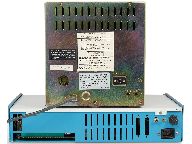 Apple-1 #70 "Demo unit", 2nd batch NTI
Apple-1 #70 "Demo unit", 2nd batch NTI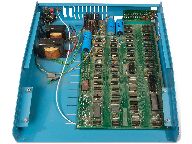 Apple-1 #70 "Demo unit", 2nd batch NTI
Apple-1 #70 "Demo unit", 2nd batch NTI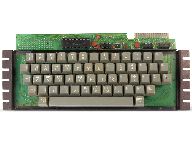 Apple-1 #70 "Demo unit", 2nd batch NTI
Apple-1 #70 "Demo unit", 2nd batch NTI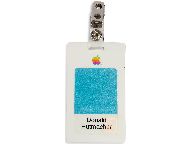 Apple-1 #70 "Demo unit", 2nd batch NTI
Apple-1 #70 "Demo unit", 2nd batch NTI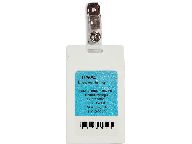
On the back is a stamp “INSP. ON SEP 21 1976”.
Used as a demo unit by Steve Jobs.
The "Company Apple" that was in Steve Jobs' office until 1985!
How Don Hutmacher came to own the computer:
“This computer was in Steve Jobs’ office before he gave notice and was walked out of Apple in 1985. After Steve was walked out, the engineers were told they could go into Steve’s office and take what they wanted. When Don got to Steve’s office, it was almost empty. He noticed this computer and a pound of Starbucks coffee. He left Steve’s old office with the computer and coffee. He has had it in his possession ever since.”
This computer has a hanging tag with the initials BF (Bill Fernandez), 5-APR-1977, ACM Mod., and the number 2. Mike Willegal, originally the keeper of the Apple I registry, thinks that it is not a prototype, but it has an additional EPROM called ACM Mod. Perhaps something to do with an improved Apple Monitor. Later, thanks to Daniel Kottke, it was clear that this Apple-1 was a demo unit and not a prototype.
Bill Fernandez says that the tag was written and initialed by him. The board is a production board, not a prototype. They tried a number of different cases for the Apple-1, but never settled on one, so this case is a prototype/experiment/trial/etc. Bill does not recall what “ACM mod.” was, but it is probably short for “AC Markkula modification.”
Bill also notes all of the wires on the back of the board that were needed to wire the EPROM into the circuit. He adds, “We would never have made a product like this, with all this hand wiring. To make a computer with this mod built in, we’d either have to put it on a small expansion board using the one expansion slot, which would have prevented the use of a cassette interface board, or we would have had to have a completely new printed circuit board layout that incorporated the new circuitry. I feel certain that we would never have done the latter. So I expect that this was a demo only, rather than a prototype of a second-generation Apple-1. If, as you surmise, the EPROM had BASIC, the cassette board would have been used only for loading and saving programs — which would have greatly reduced the trouble involved in trying to load BASIC first.”
Another correspondent, Wendell Sander, says, “Wow, I always wondered where this Apple-1 went. When I got there in August of 1977, this was the ‘Company Apple-1.’ I used it several times in 1977 and 1978 mostly to demo the Apple-1 to others. I was the Apple-1 expert because I had one. I think Bill and I were the only ones that used it. I had assumed it ended up at Stanford with the other Apple stuff.
“The ACM mod would have been for Mike Markkula, his initials are ACM. I am almost certain the mod is to put BASIC in EPROM. I seem to remember that, but Bill can probably verify if that is correct. That is a pretty special Apple-1 because it was the ‘official’ company computer. The case is particularly impressive and the only one like it I know of. It looks like a metal version of the wood cases. Feel free to pass along these comments.”
Wendell adds, “At the date on the tag, I think Apple was still selling a few Apple-1s and this computer would be used as a demo unit. Also, Mike would probably be talking to investors and would use this as a demo unit. He would have asked Bill to add the EPROM to make demos easier. Mike brought in some of the major venture investors over that period to give the company more credibility in an eventual IPO. Early investors (1977–1978) included Arthur Rock, Don Valentine, VenRock (Venture Rockefeller), and Henry Singleton, who was founder and CEO of Teledyne. Henry was a brilliant man who was a real computer hobbyist; when he came for board meetings he would check with the engineers for the latest stuff. He did his own machine language programming.”
This Apple-1 was on display in the former Living Computers: Museum + Lab.
Published in the Apple-1 Registry with kind permission of Living Computers: Museum + Lab.
Daniel Kottke told Achim Baqué in 2019 this story: Wendell Sander had BASIC in a ROM for the Apple-1. Steve Jobs saw this and wanted it too. Daniel Kottke had to build it for him and this demo unit.
The computer name was changed from "Living Computers 2" to "Demo unit".
In Sept 2024, it was sold at Christie’s auction for US\$ 945,000.
Sept 2024
(see History for more information)
Plastic Synertek 6502 CPU, plastic AMI S6820 PIA, 8 KB plastic DRAM. Two different DRAM chips are used. Three yellow capacitors. Five blue capacitors. Transformers have date codes 7550 and 7640.
Unique prototype case (read the story in the section 'History'), Datanetics keyboard. Apple Cassette Interface.
Added EPROM at breadboard (by Daniel Kottke). Wires on the back. Video connector is missing. Video cable soldered to the mainboard. Two additional heatsinks attached to voltage regulators.
Original Apple Cassette Interface has added ceramic capacitors on the back.
The arrow on the backspace keycap was drawn by Daniel Kottke.
Youtube video
Before you click on video links, make sure you have read and accepted the disclaimer regarding YouTube links, in accordance with the European Data Protection Law (2016/679).
Information on Don Hutmacher (previous owner) and Apple Computers
Don’s Work History at Apple
Donald Hutmacher worked for Apple Computers from 1981 until 1993. In 1981, Don was hired to assist in the re-birth of the Apple III Business System. Upon completion of this program and the release to manufacturing sites he was assigned as a Manufacturing Engineer to prototype, build and release to manufacturing sites of the Apple IIe and IIc systems and numerous other products. He established a reliable Printed Wiring Fabrication and Assembly vendor base to support prototype build operations. He assisted in the bringing up of the Apple IIc Logic Board in Singapore. He assisted in the start-up of the Apple IIe assembly operation in Mexico City.
From 1984 to 1986, Don performed in-depth studies of various micro-interconnection technologies, primarily Surface Mount Technology, Tape Automated Bonding, and Chip on Board. He developed spreadsheet programs that forecasted board area to assist Design Engineering in the development of new Logic boards, utilizing all the advantages of Surface Mount Technology.
In the time period of 1986 to 1988, Don was responsible for the day to day management of an Engineering department to be the Engineering interface to the Manufacturing sites and OEM Suppliers on all products that have completed DVT and PVT, and are released to production. They provided expertise and technical support to Manufacturing, Suppliers, Service, Marketing, and Quality to determine problems and proposed solutions or changes to achieve ease of manufacturing serviceability, and increase reliability. He facilitated, coordinated, and had responsibility of evaluating necessary engineering changes. He contributed to production theory, cost reduction, and set cost reduction goals.
From 1988 to 1993, Don managed a small group of engineers developing technical expertise on design features, manufacturing processes, manufacturing technologies, and cost structures of product made by Apple’s competitors and OEM suppliers. He leveraged this information to enhance Apple’s engineering, manufacturing, and marketing leadership. The products investigated included desktop and laptop computers, disk drives, power supplies, video monitors, and LCD displays. He developed cost models for all commodities used in the manufacturing of these products.
Published in the Apple-1 Registry with kind permission of Living Computers: Museum + Lab.
Jul 27, 2025
Mar 21, 2018: History
Mar 21, 2018: Geo description
Mar 31, 2018: Components
Apr 12, 2018: Description of picture(s)/video(s)
May 28, 2019: Website(s). Museum's website added
Jun 13, 2019: Video link(s) added
Nov 16, 2021: Working condition
Sep 27, 2024: Auctions. History
Sep 27, 2024: On display status
Sep 27, 2024: Additional information
Sep 27, 2024: Description of picture(s)/video(s)
Sep 27, 2024: 9 picture(s) added
Jul 27, 2025: Components. State. Equipment. Description. History
We appreciate your help:
Please spread the word about the Apple-1 Registry by adding a link to your social media account and/or website. Contact us if you have new information about any Apple-1 or Apple-1 (parts) for sale.
You can link to the Apple-1 Registry. Any form of reprint or reproduction (including excerpts) is only allowed with written permission from the Apple-1 Registry.
Here you will find press releases and images free to use under CC BY-SA 4.0.